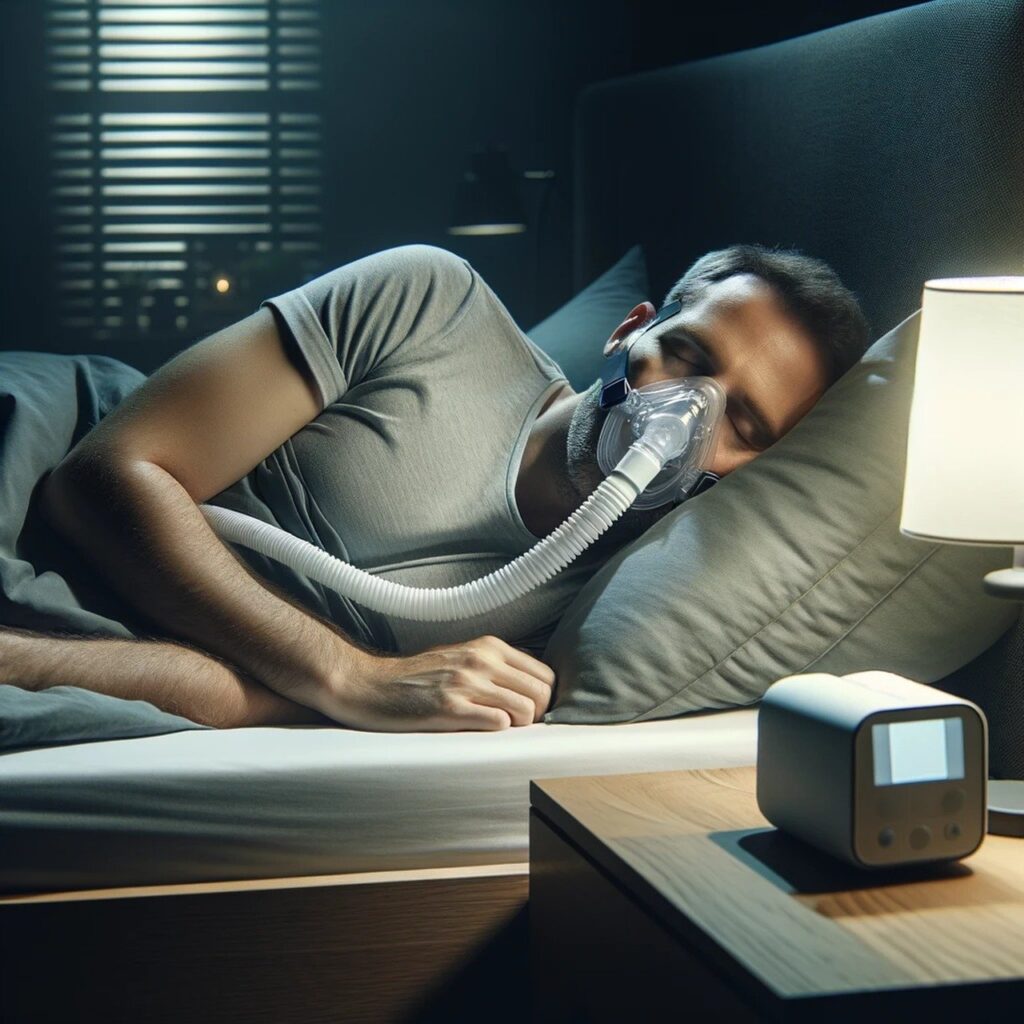CPAP Machines
Medical devices for treating sleep apnea
What Is a CPAP Machine?
A CPAP (Continuous Positive Airway Pressure) machine is a medical device used primarily to treat sleep apnea, a condition characterized by pauses in breathing or shallow breaths during sleep.
CPAP therapy involves delivering a continuous flow of air at a prescribed pressure through a mask worn over the nose or both the nose and mouth.
Functionality
Here’s how a CPAP machine functions and some potential risks associated with its use:
- Air pressure delivery: The CPAP machine draws in room air, filters it, and then pressurizes it to the prescribed level determined by a sleep specialist based on the severity of the individual’s sleep apnea. The pressurized air is delivered through a flexible tube to the mask worn by the patient.
- Maintaining airway patency: The continuous positive airway pressure from the machine acts as a pneumatic splint, keeping the airway open and preventing collapse or obstruction during inhalation and exhalation. This helps to maintain normal breathing patterns throughout the sleep cycle.
- Improving oxygenation: By preventing apneas and hypopneas (shallow breaths), CPAP therapy ensures adequate oxygenation of the blood, reduces daytime sleepiness, and improves overall sleep quality.
Potential risks
There are several potential risks associated with the use of a CPAP machine.
Mask discomfort
Some patients may experience discomfort or irritation from wearing the CPAP mask, particularly if it doesn’t fit properly or causes pressure points on the face. This can lead to skin irritation, sores, or difficulty tolerating the therapy.
Dryness and congestion
The continuous flow of pressurized air can cause dryness of the nose, mouth, and throat, as well as nasal congestion or irritation. This can be mitigated by using a humidifier attachment with the CPAP machine or using nasal saline spray.
Mask leak
Improper fitting or adjustment of the CPAP mask can result in air leaks, reducing the effectiveness of therapy and disturbing sleep. Regular mask fittings and adjustments may be necessary to minimize leaks.
Claustrophobia
Some individuals may experience feelings of claustrophobia or anxiety when wearing the CPAP mask, especially initially. Gradual acclimatization and relaxation techniques can help alleviate these feelings.
Aerophagia
Swallowing air (aerophagia) can occur during CPAP therapy, leading to bloating, belching, or discomfort in the stomach. Adjusting the pressure settings or using a bilevel positive airway pressure (BiPAP) machine with different pressure levels during inhalation and exhalation may help reduce aerophagia.
Skin irritation and pressure sores
Prolonged use of the CPAP mask or improper fit can cause skin irritation, pressure sores, or ulceration on the face, nose bridge, or nasal passages. Regular cleaning of the mask and cushion, as well as using protective barriers like soft cloth wraps, can help prevent skin problems.
Conclusion
Overall, while CPAP therapy is highly effective in treating sleep apnea and improving sleep quality, it is essential for patients to work closely with their healthcare providers to address any issues or concerns related to comfort, mask fit, and potential side effects.
Regular follow-up appointments and adjustments to the CPAP settings or equipment may be necessary to optimize therapy and ensure adherence.
Links
Read about the difference between CPAP and BiPAP machines here.
